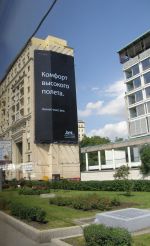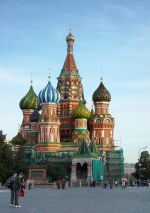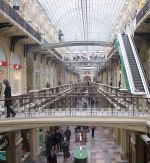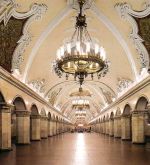27 JULY 2009
YOUR WORDS
Readers are invited to add their comments to any story. Click on the article to see and add.
BTN DISTRIBUTION
BTN also goes out by email every Sunday night at midnight (UK time). To view this edition click here.
The Business Travel News
PO Box 758
Edgware HA8 4QF
United Kingdom
info@btnews.co.uk
© 2022 Business Travel News Ltd.
Article from BTNews 27 JULY 2009
ON TOUR: Moscow
 Moscow has been the capital of Russia on and off for one thousand years. For the last three centuries it has competed for the title with St Petersburg and certainly during Vladimir Putin’s Presidential reign the real power sometimes seemed to be with the city of that man’s birth. Moscow is the political, economic, cultural, religious, financial, educational and transportation centre of Russia, a global city and always has been.
Moscow has been the capital of Russia on and off for one thousand years. For the last three centuries it has competed for the title with St Petersburg and certainly during Vladimir Putin’s Presidential reign the real power sometimes seemed to be with the city of that man’s birth. Moscow is the political, economic, cultural, religious, financial, educational and transportation centre of Russia, a global city and always has been.
Visiting Moscow is a pleasure, particularly in the spring and autumn. It can be very hot in August and as both Napoleon and Hitler discovered winter is extremely fierce. Getting a visa is not cheap and means losing your passport for up to ten days!
 Domodedovo is now Moscow’s major airport, and is served by British Airways, bmi and Transaero. Sheremetyevo, the former major gateway now being rapidly modernised, is still the hub for Aeroflot. Both airports have direct train services to the Moscow Metro system.
Domodedovo is now Moscow’s major airport, and is served by British Airways, bmi and Transaero. Sheremetyevo, the former major gateway now being rapidly modernised, is still the hub for Aeroflot. Both airports have direct train services to the Moscow Metro system.
Say Moscow and the first reaction is the Kremlin and Red Square. Sited by the Moscow river they dominate the city. One must also mention what now forms as some kind of memorial to the Stalinist era, the Seven Sisters skyscrapers, built in an elaborate combination of Russian Baroque and Gothic styles using (stolen) American technology. They are massive.
The seven are: Hotel Ukraina (soon to be the Radisson Royal, Kotelnicheskaya Embankment Apartments, the Kudrinskaya Square Building (apartments), the (Hilton) Leningradskaya Hotel, the Ministry of Foreign Affairs, Moscow State University (high on a hill overlooking the Olympic Stadium and the city, and the Red Gates Administrative Building. The Kremlin (which means castle – other Russian cities also have Kremlins) is a combination of 18th century towers, churches and palaces, with plenty of Soviet 20th century additions. It is steeped in history. Visit the Armoury, much more than a museum of weapons, a very visible exhibition of the wealth of the Tsars including their wedding gowns, thrones, vestments and jewels. The state coaches are on display, some made in England. It is all mind-boggling.
The Kremlin (which means castle – other Russian cities also have Kremlins) is a combination of 18th century towers, churches and palaces, with plenty of Soviet 20th century additions. It is steeped in history. Visit the Armoury, much more than a museum of weapons, a very visible exhibition of the wealth of the Tsars including their wedding gowns, thrones, vestments and jewels. The state coaches are on display, some made in England. It is all mind-boggling.
Moscow is full of museums, galleries and exhibition halls catering for all tastes. The Pushkin State Museum and adjoining Museum of Fine Art are close by the Kremlin. There is a museum of modern history. Of the churches that survived the Bolsheviks many are museums including the remarkable St Basil’s Cathedral at one end of Red Square. Stalin ordered it to be pulled down and then changed his mind. It is one of the great symbolic features of Russia. There are a number of military museums including one dedicated to the Great Patriotic War (WWII). The Armed Forces Museum is housed in a fine Soviet style building but the outside exhibition is very disappointing unless you are into tanks. The aircraft collection is incomplete and poor compared with say Duxford or Cosford. However Moscow shares with the Shropshire former RAF base a Museum of the Cold War.
There are a number of military museums including one dedicated to the Great Patriotic War (WWII). The Armed Forces Museum is housed in a fine Soviet style building but the outside exhibition is very disappointing unless you are into tanks. The aircraft collection is incomplete and poor compared with say Duxford or Cosford. However Moscow shares with the Shropshire former RAF base a Museum of the Cold War.
Booming just a couple of years ago, but still busy, is the GUM department store in Red Square, now open to all, if you can afford it, the embodiment of the communist style of socialism. At the very top they lived like the royalty of old. The building itself dates from 1890 and comprises of three galleries linked together and covered. It is a cross between London’s Burlington Arcade and Harrods and featuring the ‘top end’ brands. Taking tea in one of the coffee shops can be very expensive. The Bolshoi Theatre has been off limits since 2003, corruption in the building industry rampant. When it will be finished nobody seems to know and the same goes for the massive Four Seasons Hotel. However don’t be put off in terms of music and ballet, there is still always a fine selection of offerings. Moscow also has the world’s largest puppet theatre and a traditional circus.
The Bolshoi Theatre has been off limits since 2003, corruption in the building industry rampant. When it will be finished nobody seems to know and the same goes for the massive Four Seasons Hotel. However don’t be put off in terms of music and ballet, there is still always a fine selection of offerings. Moscow also has the world’s largest puppet theatre and a traditional circus.
Most of the major hotel brands are represented in the city but don’t expect a bargain. Some new budget properties are on their way. However the small owner/occupier refurbished town house that London, Paris and most European cities abound in for the most part does not exist. Most of the 1950s concrete monsters built for visiting workers have been upgraded. However the idea of “service” has not really got through but this could be due to a language problem, a yes could mean a no, or a don’t know.
If you have a requirement for regular use of a mobile phone you will find it vastly cheaper to purchase a local sim card. Using, typically, Orange can be hideously expensive.
In Moscow there are two types of taxi. The official ones, which are not cheap, and the “gipsy” operators, usually normal citizens just trying to exist in a costly world, having a requirement for going from a to b and happy to collect extra funds. You can bargain, and it is the norm. However, whilst Moscow is safe it is advised that women do not use these ‘cabs’ by themselves. Easily the best way to get around in Moscow is the splendid Metro. Opened in 1935, it is well known for the ornate design of many of its stations which contain outstanding examples of socialist realist art. On a normal weekday the system can carry up to 7m passengers. Whilst the signs are in Cyrillic getting around should prove no problem.
Easily the best way to get around in Moscow is the splendid Metro. Opened in 1935, it is well known for the ornate design of many of its stations which contain outstanding examples of socialist realist art. On a normal weekday the system can carry up to 7m passengers. Whilst the signs are in Cyrillic getting around should prove no problem.
Eating in Moscow is a delight as befits an international city. It is reputed to host 6,000 restaurants. Count Stroganoff came from St Petersburg but his dish is available everywhere. Russian food is hale and hearty. It really is a requirement for the cold winters.
Moscow should be on everyone’s list of places to visit. Three days would be a minimum.
OUR READERS' FINEST WORDS (All times and dates are GMT)
All comments are filtered to exclude any excesses but the Editor does not have to agree with what is being said. 100 words maximum
